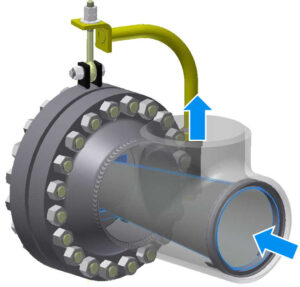There are two types of strainers in the industry- permanent and temporary. Each type has its own advantages and disadvantages that are worth taking into account before making a purchase. This article will explore the differences between each type so that you can make an informed decision when it comes time to buy.
Permanent And Temporary Strainers: What Is The Difference?
Permanent strainers are designed to be a permanent fixture in your plumbing system. They have a variety of mesh sizes that can be used to capture different sizes of debris. The drawback to permanent strainers is that they can be expensive and require some installation expertise.
Temporary strainers, on the other hand, are a much more affordable option. They are easy to install and can be removed when they are no longer needed. The main disadvantage of temporary strainers is that they have a limited life span and need to be replaced often.
Permanent Strainers Types
There are three types of permanent strainers – basket, in-line, and duplex.
Basket Strainers
Basket strainers are the most common type of permanent strainer. They have a cylindrical body with a lid on top. The lid has a number of holes that allow water to flow through, while the debris is captured by the basket. Basket strainers are easy to install and can be removed when they are no longer needed. The main drawback to basket strainers is that they can become clogged if too much debris accumulates. This can cause your plumbing system to back up.
In-line Strainers
In-line strainers are designed to be installed in between two pieces of plumbing. They are often used in commercial settings where there is a lot of traffic. In-line strainers have a cylindrical body with a screen on the inside. The screen captures debris while the water flows through. The main advantage of in-line strainers is that they are easy to install and can be placed anywhere in the plumbing system. They also have a large filter surface area, which allows them to capture more debris. The downside to in-line strainers is that they are expensive and require regular cleaning and maintenance.
Duplex Strainers
Duplex strainers are two connected strainers that work together to capture debris. One strainer captures the large debris while the other catches the small debris. This type of strainer is often used in residential applications, where there is a mix of large and small debris. The pros of duplex strainers are that they are easy to install and can capture a variety of debris, while the cons are that they are pricey and need to be cleaned and maintained on a regular basis.
Temporary Strainers Types
There are two types of temporary strainers – mesh and bag.
Mesh And Bag Strainers
Mesh strainers are the most common type of temporary strainer. The mesh is designed to capture debris while the water flows through. Mesh strainers are often used in commercial settings, where there is a lot of traffic.
Bag strainers are made up of a number of fabric bags. The main difference between bag and mesh strainers is that mesh strainers have a screen that captures the debris, while bag strainers have fabric bags that collect the debris. Bag strainers are often utilized in residential settings, where there is a mixture of big and tiny debris.
Pros And Cons Of The Two
Bag strainers, like all other types of strainers, are efficient in catching a variety of garbage. This is why they are often used in both commercial and residential settings. In addition, bag strainers are very easy to use and maintain. All you have to do is remove the bag and dump the debris into the trash can. Mesh strainers, on the other hand, can be a bit difficult to clean. The debris often get strapped in the screen, and it can be difficult to remove it. This is why mesh strainers are not as common as bag strainers. However, they are more effective in capturing large pieces of debris.
How To Choose The Right Strainer
When choosing a strainer, you need to consider the type of debris you want to capture and the size of the debris. You also need to take into account the flow rate of your plumbing system. The faster the water flows, the larger the strainer you will need.
- Mesh strainers are a good option for small and large debris. They are easy to install and can be cleaned with a brush.
- Bag strainers are ideal for small debris. The fabric bags can be easily removed and emptied into the trash can
- In-line strainers are perfect for large debris. They are easy to install and have a large filter surface area
- Duplex strainers are perfect for small and large debris. They are easy to install and have a large filter surface area
- Temporary mesh strainers are good for small and large debris. They are easy to use and maintain. All you have to do is remove the screen and clean it with a brush.
In conclusion, when choosing a strainer, you need to consider the size and type of debris you want to capture, as well as the flow rate of your plumbing system. There are a variety of strainers available on the market, so you should be able to find one that meets your needs.
Shirley Mist has been involved in fashion and design for many years. She has also written extensively for many online publications. She currently writes for The Tribune World and is a valued member of our team.
